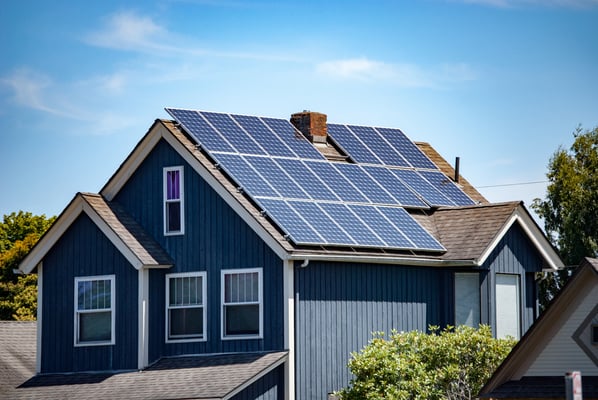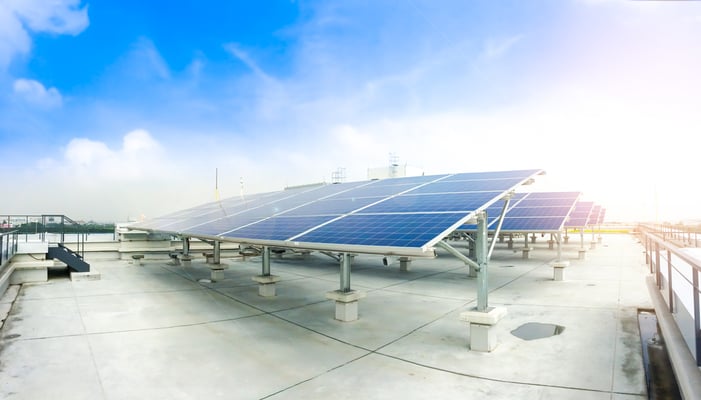How Incentives and Import Tariffs Affect the Cost of Solar Power

Solar power systems are cost-effective as electricity sources for buildings, making them an attractive investment. Their payback period can be less than five years with favorable conditions, which is excellent when you consider that solar panels last more than 25 years. Many factors determine the installed cost of solar power, beyond the price of solar panels alone. The final price can vary depending on local regulations and incentives, as well as geographic location.
For example, a home solar system in the US is around three times more expensive than a similar installation in Australia. This is influenced by the shorter distance between Australia and China, where most solar components are manufactured. Also, there are no specific import tariffs for solar panels in Australia, while the US applies a 20% tariff as of 2020.
Reduce your electricity bills with solar power and other renewable energy sources.
Local incentives can also reduce the cost of going solar, and the US has a federal tax credit of 26% for solar power systems. In other words, for every $1,000 invested in a solar installation, you can deduct $260 from your next tax declaration. Just keep in mind that this benefit is temporary, and it will be reduced to 22% in 2021. The tax credit disappears for residential installations in 2022, and only a 10% credit for businesses will remain.
How Much Do Solar Power Systems Cost in the US?

The sales price of a solar power system varies depending on its location, installer and component brands. However, according to research from the National Renewable Energy Laboratory (NREL), the following are typical installation costs for various system capacities:
- Residential installation, 3 to 10 kW = $2.70 per watt DC (direct current)
- Commercial installation, 10 kW to 2 MW = $1.83 per watt DC
- Utility-scale installation, over 2 MW = $1.06 per watt DC
Solar power demonstrates economies of scale, but consider the end use of each installation type. Utility-scale systems have a lower cost per watt, but they are used to sell electricity at wholesale prices. On the other hand, home and business installations have a higher cost per watt, but their savings are based on retail prices, which are higher than wholesale prices. Solar power is competitive at all system scales, even with the differences in cost per watt.
Does the Solar Import Tariff Affect the Federal Tax Credit?
In 2018, the Trump administration introduced an import tariff for both solar panels and solar cells. This means that solar manufacturers cannot avoid the tariff by importing solar cells and assembling them locally. The tariff was introduced to give local solar manufacturers a competitive advantage against low-cost imported panels, and it lasts from 2018 to 2021:
|
Year |
Solar Import Tariff |
|
2018 |
30% |
The first 2.5 gigawatts of solar capacity imported every year are exempt, and the tariff disappears completely in 2022.

The US solar industry has been slowed down by the import tariff. Fortunately, the tariff does not increase the final price of solar installations by 20%, since it only affects the solar panels. Consider that photovoltaic systems use other components like racking, wiring and inverters. The final price also includes the contractor’s labor costs, overhead and profit. All these costs are unaffected by the tariff.
As of 2020, imported solar panels cost 20% more due to the tariff. However, the final price of residential solar PV systems is only affected by around 2-4%. This effect will continue to decrease between 2020 and 2022 as the import tariff is phased out. Larger solar installations are affected more, since solar panel costs represent a higher percentage of their final price. In these cases, the price increase can reach up to 10%.
The solar import tariff is offset by the federal tax credit, which is based on the final price of solar power systems.
- Assume a 10-kW installation costs $30,000, considering a unit cost of $3 per watt.
- If the solar tariff affects the final price by 3%, the estimated price increase is $900.
- However, 26% of $30,900 becomes a tax credit, equivalent to $8,034.
In this example, the tax credit is almost 9 times larger than the import tariff effect. This is because the tax credit is based on the price of a complete solar PV system, while the import tariff only affects solar panels. Comparing only the percentage amounts is misleading, since a 20% import tariff sounds almost as large as 26% tax credit.

Michael Tobias
Michael Tobias, the Founding Principal of NY Engineers, currently leads a team of 150+ MEP/FP engineers and has led over 4,000 projects in the US
Join 15,000+ Fellow Architects and Contractors
Get expert engineering tips straight to your inbox. Subscribe to the NY Engineers Blog below.

